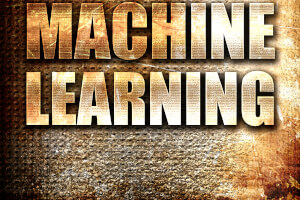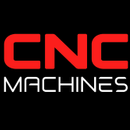Enhancing Productivity and Efficiency with AI in the CNC Machine Industry

Case Study: AI in the CNC Machine Industry – Enhancing Productivity and Efficiency
The integration of Artificial Intelligence (AI) in the CNC machine industry is revolutionizing manufacturing processes by improving productivity, reducing downtime, and enhancing precision. This case study explores the eight most useful AI tools and practices in manufacturing, detailing their application and benefits through a practical example of a CNC machining company aiming to increase productivity and save time and effort.
AI Tools and Practices in CNC Manufacturing
1. Predictive Maintenance
- Tool: IBM Watson IoT
- Application: AI algorithms analyze data from machine sensors to predict potential failures before they occur.
- Benefit: Reduces unplanned downtime and maintenance costs by scheduling timely maintenance.
2. Process Optimization
- Tool: Siemens MindSphere
- Application: AI optimizes machining parameters such as speed, feed rate, and cutting paths in real-time.
- Benefit: Enhances machining efficiency, reduces waste, and improves product quality.
3. Quality Control
- Tool: NVIDIA Deep Learning AI
- Application: AI-powered visual inspection systems detect defects and ensure quality control.
- Benefit: Increases accuracy in defect detection, reducing scrap rates and rework.
4. Supply Chain Management
- Tool: SAP Leonardo
- Application: AI manages and optimizes the supply chain by predicting demand and optimizing inventory levels.
- Benefit: Reduces inventory costs and improves delivery times.
5. Robotic Process Automation (RPA)
- Tool: UiPath
- Application: RPA automates repetitive tasks such as data entry, scheduling, and logistics.
- Benefit: Frees up human workers for more complex tasks, increasing overall efficiency.
6. Digital Twins
- Tool: GE Digital
- Application: Digital twins create virtual replicas of physical machines to simulate and optimize performance.
- Benefit: Allows for real-time monitoring and adjustments, improving machine efficiency and reducing downtime.
7. Adaptive Control
- Tool: FANUC AI
- Application: AI adjusts machining parameters in real-time based on sensor data to optimize cutting conditions.
- Benefit: Improves tool life and machining precision.
8. AI-Driven Design
- Tool: Autodesk Generative Design
- Application: AI generates optimized design solutions based on specified constraints and requirements.
- Benefit: Reduces material usage and development time, leading to more efficient manufacturing processes.
Case Study Example: B&C CNC Machining Inc.
Company Profile
B&C CNC Machining Inc. is a mid-sized manufacturer specializing in precision machining. The company aims to enhance productivity and reduce operational costs through AI integration.
Step-by-Step Implementation
1. Assessment and Planning
- Conduct a comprehensive assessment of current processes and identify areas for improvement.
- Develop a strategic plan for AI integration, prioritizing predictive maintenance and process optimization.
2. Predictive Maintenance Implementation
- Install IBM Watson IoT sensors on all CNC machines.
- Use AI algorithms to analyze sensor data and predict potential failures.
- Schedule maintenance proactively, reducing unplanned downtime by 30%.
3. Process Optimization Deployment
- Integrate Siemens MindSphere to optimize machining parameters.
- Continuously monitor and adjust speed, feed rate, and cutting paths in real-time.
- Achieve a 20% increase in machining efficiency and a 15% reduction in waste.
4. Quality Control Enhancement
- Implement NVIDIA Deep Learning AI for visual inspection.
- Train the AI model to detect common defects in aerospace and automotive parts.
- Reduce scrap rates by 25% and improve overall product quality.
5. Supply Chain Management Optimization
- Adopt SAP Leonardo to manage and optimize the supply chain.
- Use AI to predict demand and optimize inventory levels.
- Reduce inventory costs by 18% and improve delivery times by 12%.
6. Robotic Process Automation (RPA) Integration
- Deploy UiPath to automate data entry, scheduling, and logistics tasks.
- Free up human workers for more complex tasks, increasing overall efficiency by 10%.
7. Digital Twins Creation
- Create digital twins of all CNC machines using GE Digital.
- Simulate and optimize machine performance in real-time.
- Reduce downtime by 15% and improve machine efficiency by 10%.
8. Adaptive Control Installation
- Integrate FANUC AI for adaptive control of machining parameters.
- Improve tool life by 20% and machining precision by 15%.
9. AI-Driven Design Adoption
- Use Autodesk Generative Design for optimized design solutions.
- Reduce material usage by 12% and development time by 20%.
Results and Benefits
By integrating these AI tools and practices, B&C CNC Machining Inc. achieved significant improvements in productivity and efficiency:
- Reduced Downtime: Predictive maintenance and digital twins reduced unplanned downtime by 45%.
- Increased Efficiency: Process optimization and RPA increased overall efficiency by 35%.
- Enhanced Quality: AI-driven quality control reduced scrap rates by 25%.
- Cost Savings: Optimized supply chain management and reduced material usage led to a 30% reduction in operational costs.
The integration of AI in CNC machining offers transformative benefits, including improved productivity, enhanced quality, and significant cost savings. By adopting AI tools and practices such as predictive maintenance, process optimization, and digital twins, manufacturers can stay competitive and meet the evolving demands of the industry. B&C CNC Machining Inc.'s success story illustrates the tangible benefits of AI, setting a benchmark for other manufacturers to follow.


